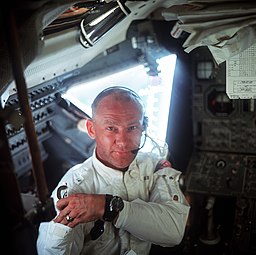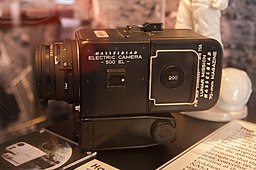1.The Theme for Our 7/26 Show: #SpaceTravel
The theme for our July 26th show was #SpaceTravel. We featured tweets about space exploration and commercial spaceflights in commemoration of the 50th anniversary of the July 1969 Apollo 11 moon landings.
First we talked about the strides companies in the private sector are making in their research and development, bringing commercial spaceflight closer to reality than ever before. Virgin Records founder Richard Branson’s spaceflight company Virgin Galactic succeeded in sending a piloted spacecraft to the edge of space at the end of 2018. In February of 2019, they succeeded in sending their first passenger to the edge of space. They currently have 600 customer reservations (who’ve paid about $80 million in deposits in total) for its space tourist flights. Amazon.com CEO Jeff Bezos’ Blue Origin conducted a successful suborbital test flight of their renewable rocket New Shepard in 2015, and unveiled a prototype of a lunar lander earlier in 2019. Electric car maker Tesla CEO Elon Musk’s SpaceX is currently conducting test runs of StarHopper, a small prototype of its planned next-generation Starship vehicle.
Our resident English teacher Torikai Kumiko-sensei actually served as one of the simultaneous interpreters who translated the live satellite broadcasts of the Apollo 11 moon landing. On the show she talked about Buzz Aldrin, who was the second person to walk on the moon after Neil Armstrong, and Michael Collins, who remained in lunar orbit in the command module Columbia—and has deliberately remained out of the spotlight.
We also featured the NASA Selfies app, which allows you to generate snapshots of your face inside the helmet of a spacesuit, floating in space before any of a number of grand cosmic backdrops. There are currently 30 images to choose from, including the Milky Way and the Orion Nebula. As resident commentator Furuta Daisuke mentioned, a ticket on one of the planned commercial spaceflights—training included—is estimated to be between 200,000 and 300,000 dollars a seat. For the moment, apps and VR experiences are much more realistic.
2.Space-Related English Idioms
There are many space-related idioms in the English language. It seems the moon and the stars represent something not of this world and beyond our understanding; they inspire the romantic in us.
●over the moon
This is a British English idiom meaning “extremely happy" or “very pleased"—so much so that you feel you could jump over the moon.
●love someone to the moon and back
The phrase to love someone to the moon and back is a way to express the scale of love one feels for another.
●written in the stars
To believe that something is written in the stars is to believe that there is a force greater than us that governs the universe and the future, such as fate. Those who believe in astrology believe that the stars have a spiritual influence over our lives.
●star-crossed lovers
Shakespeare called Romeo and Juliet star-crossed lovers, by which he meant their love was not favored by the stars and fated to end in tragedy.
Other space-related idioms are used to describe the difficulty of tasks, a person’s ability, or their ambition.
●it’s not rocket science / you don’t need to be a rocket scientist
When you say something is “not rocket science", you mean that you don’t need to have years of study and an advanced degree in science to understand it—in other words, that it’s simple and basic.
●failure to launch
This is an idiom used to refer to adult children who for one reason or another have failed at “launching" into adult life, or in other words, are still dependent on their parents.
●to aim/reach/shoot for the stars
To aim for the stars means to be highly ambitious and to aspire to greatness, even if it seems impossible.
●to hitch your wagon to a star
To hitch one’s wagon to a star is a similar idiom that means to set high goals. In recent years it is used to describe someone who aligns oneself with or attempts to ride on the coattails of someone successful.
Space-related idioms are also used to describe how different our values and ways of thinking can be from one another.
●on/from/living on another planet
To be on or from another planet is to be an alien. This idiom is used to describe someone who has completely different values, or who is detached or uninterested from what is happening around them.
●men are from Mars, women are from Venus
This is the title of American relationship counselor John Gray’s massively popular 1992 book. The phrase has since entered the English lexicon as a way to describe how different men and women see and approach the world around them.
●come back down to Earth
When you calm down or return to reality after a period of excitement, you come back down to Earth.
3.Famous Products Used in the Apollo Missions
In this photo taken by Neil Armstrong during the Apollo 11 mission, Buzz Aldrin can be seen wearing his Omega Speedmaster. Below I’ve written about a number of iconic products associated with the Apollo Missions—a watch, a case, and a couple of cameras.
●Omega Speedmaster
In the mid 60s, the Omega Speedmaster passed a rigorous series of tests under torturous conditions and was chosen by NASA as the official timepiece of the space program. During the Apollo 11 moon landing, a malfunctioning electronic timer in the lunar lander prompted Neil Armstrong to leave his Speedmaster in the cockpit. Thus, Buzz Aldrin’s timepiece became the first “Moonwatch" to be worn on the surface of the moon. In 2019, Omega announced that it had produced 6,969 models of a special 50th anniversary edition of the Speedmaster.
●Zero Halliburton Technical Case
Zero Halliburton is an American luggage brand that is known for its aluminum attaché cases.
The astronauts on the Apollo 11 mission used sturdy, airtight Zero Halliburton technical cases to transport moon rocks back to Earth. To commemorate the 50th anniversary of Apollo 11, the company has released limited-edition Technical Cases in medium and small sizes (50 each).
●Hasselblad 500 EL
From the first mission of the Apollo program to its last, NASA astronauts used Hasselblad mid-format 500 EL cameras that had been stripped of unnecessary parts. All of the iconic photos of the first walk on the moon were taken using Hasselblad cameras. 12 still remain on the lunar surface. (Items were left behind to make the lander as light as possible for takeoff.)
●Nikon Photomic FTN
NASA mainly used Hasselblad 70mm cameras throughout the 60s. Seeking a more portable option, Nikon Photomic FTNs (modified Nikon Fs) were taken aboard Apollo 15 in 1971. Nikon cameras have been a part of every manned NASA spaceflight since. In 2017, 10 Nikon D5s were sent up to the ISS, and word is that the station has a sizable collection of Nikon lenses.
The following is a time-lapse film comprised of photos taken from space using Nikon cameras.
4.How Will Commercial Space Travel Effect Humanity?
The other day, I had occasion to rewatch the 1994 Disney animated classic The Lion King. One particular scene struck me: Mufasa, king of the Pride Lands, looks up to the night sky and explains to his son Simba that the stars are their ancestors—“the great kings of the past”—watching over them.
Our human ancestors likely looked up at the night sky and found comfort in that same belief. Before observations by scientists led to the development of astronomy, people had no reason not to believe that the sky was nothing more than a curtain that covered the Earth, and that stars were fixed jewels in that tapestry. It wasn’t until after the 17th century that heliocentrism came to replace geocentrism as the accepted model of the solar system. And it wasn’t until the second half of the 20th century that humans succeeded in reaching outer space and landing on the moon. Over the past few hundred years and especially over the past half-century, space has slowly become more and more familiar to us, scientifically speaking. Yet space remains foreign and unfamiliar to most human beings, cold, distant, and irrelevant to our day-to-day lives. In the U.S., there are many who continue to believe that the Apollo 11 moon landings were an elaborate hoax.
Almost 60 years since humans began flying into space, less than 600 astronauts have traveled beyond the edge of our planet’s atmosphere. Only 24 astronauts have gone further than low Earth orbit—where the International Space Station and most of our satellites are located—and only 12 have walked on the moon. Most, if not all of those astronauts say that the experience of looking down at the Earth from space changed them in profound ways. Whether it’s the majesty of nature, the smallness of our planet, or a oneness with humanity, they have spoken of the experience in what some would call spiritual terms.
It’s interesting to note that a roughly equal number of people—about 600 customers—have placed reservations with Virgin Galactic for space tourist flights. If the day should come when the average middle-class human can afford to take commercial flights into space, we may reach a tipping point where humanity collectively achieves a kind of satori—a higher state of awareness or existence. No longer would we live selfishly, no longer would we be focused on just the present and immediate future. We’d have a new outlook on life, one that might inspire us to feel a oneness with other human beings beyond national borders. We might take a renewed approach the environment and the myriad social issues of our day, woke and motivated to make a difference here and now. Space travel symbolizes the promise that we can overcome our earthly problems.
Or, maybe we’d just find ourselves packed onto a spaceship with a corporate logo emblazoned on its side, staring down at the Earth through the latest generation of smartphones. Maybe we’d turn our back on the Earth as we snap some selfies, which we’d post to social media with the hashtag #SpaceTravel. And maybe we’d come back down to Earth and pile onto a crowded commuter train the following day, all the while repeatedly checking to see how many “likes" our space selfies had garnered since the last time we looked.
5.My Wardrobe This Week
Brown button-down shirt by Le Canon

As I planned on wearing this shirt without a tie, I asked for the collar to be slightly on the higher side, with supports inserted to keep it hanging elegantly. The second button from the top has been lowered slightly to give the collar a natural look. Le Canon owner Morita-san recommended black-lip pearl oyster buttons, which turned out wonderfully.
Yellow chinos by Brooks Brothers

Brown Woven Belt by Isetan Men’s












